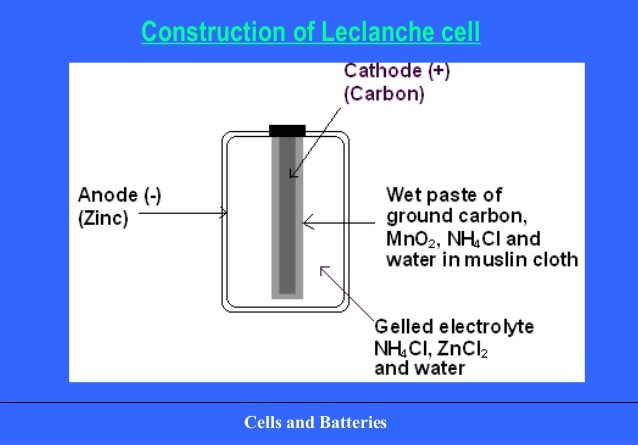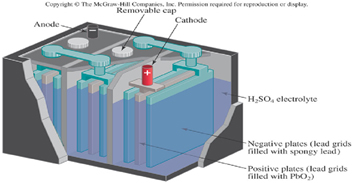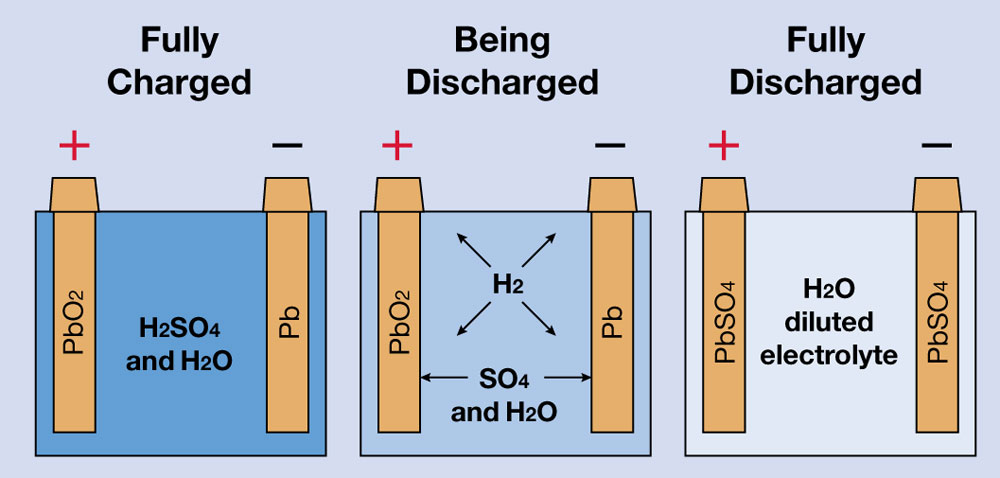Back to: CHEMISTRY SS2
Welcome to Class !!
We are eager to have you join us !!
In today’s Chemistry class, We will be learning about The Applications of Electrochemical Cells. We hope you enjoy the class!
CONTENT
- The distinction between Primary and Secondary Cells
- Types of Electrochemical Cells.
APPLICATION OF ELECTROCHEMICAL CELLS
Electrochemical cells are widely used to generate small currents of electricity for everyday purposes and industrial operations.
PRIMARY AND SECONDARY CELLS
An electrochemical cell can be classified into a primary cell and secondary cell. A primary cell is that is not rechargeable e.g. Daniel cell and Leclanche cell. A secondary cell is a cell that is rechargeable e.g. Lead-acid accumulator.
The distinction between a primary and a secondary cell is as follows:
- A primary cell cannot be recharged whereas a secondary cell can be recharged.
- In a primary cell, the chemical reaction is irreversible whereas, in a secondary cell, the chemical reaction is reversible.
- A primary cell is cheap and easy to use while a secondary cell is expensive and complex in usage.
Primary cells are commonly found and used in most of the electric toys, clocks, wristwatches, domestic remote control, etc.
Secondary cells are commonly used in starting, lighting and ignition in vehicles. They are also in Uninterrupted Power Supplies (UPS), telecommunications, etc.
TYPES OF ELECTROCHEMICAL CELLS
- DANIEL CELL: It consists of a copper vessel filled with a saturated solution of copper (II) tetraoxosulphate (VI) and a porous pot filled with a zinc tetraoxosulphate (VI) solution where a zinc rod is immersed in. The initial e.m.f produced by the Daniel cell is about 1.1volts. This cell has to be replaced once the chemicals in it are used up.
- LECLANCHE CELL: For this cell, the anode and cathode are a zinc rod and carbon rod respectively. The electrolyte is ammonium chloride in solution or paste form.
At the anode, the zinc atoms lose two electrons each to dissolve in the electrolyte as positively charged zinc ions. The electrons which are released pas through an external circuit performing useful work such as lighting-up a torch bulb before arriving at the cathode of the cell.
Zn(s)→ Zn2+(aq) + 2e– Oxidation
At the cathode, the ammonium ions accept electrons to become reduced to ammonia and hydrogen gas. The hydrogen gas is removed by manganese (IV) oxide to prevent it from adhering to the cathode. This is known as depolarization of the cell.
2NH4+(aq) + 2e–→ 2NH3(g) + H2(g) Reduction
The Leclanche dry cell is the most common cell used in many small electrical appliances such as torches, transistor radio, bicycle lamps etc.

3. LEAD ACID ACCUMULATOR: This commonly referred to as a car battery. It is often charged by passing a direct current through it. The charged cell can then produce an electric current when required. The cathode of a fully-charged lead accumulator is lead (IV) oxide, PbO2, and its anode is metallic lead. The electrolyte is dilute tetraoxosulphate (VI) acid solution.

At the anode: The lead atoms release two electrons each to become oxidized to lead (II) ions which then combine with tetraoxosulphate (IV) ions in the electrolyte to become deposited on the anode as lead (II) tetraoxosulphate (VI). The electrons released pass round an external circuit as an electric current to be used for starting the engine of a vehicle, for lighting the car lamps and so on before arriving at the electrode.
Pb(s)→ Pb2+(aq) + 2e–
Pb2+(aq) + SO42-(aq)→ PbSO4(s)
At the cathode: The electrons from the anode are accepted at the cathode where the lead (IV) oxide and the hydrogen ions from the electrolyte undergo reduction to produce lead (II) ions and water. The lead (II) ions then combine with the tetraoxosulphate (VI) ions from the electrolyte to become deposited at the cathode as lead (II) tetraoxosulphate (VI).
PbO2(s) + 4H+(aq) + 2e–→ Pb2+(aq) + 2H2O(l)
Pb2+(aq) + SO42-(aq)→ PbSO4(s)
During the discharging process, the density of the acid decreases to 1.15gcm-3 due to the absorption of hydrogen and tetraoxosulphate (VI) ions from the electrolyte and the e.m.f of the cell drops to 1.8V.
When both electrodes are completely covered with lead (II) tetraoxosulphate (VI) deposits, the lead accumulator will stop discharging a current. To make produce a current again, it will have to be recharged.

For a recharging cell: The electrode which is the anode in the charged cell becomes the cathode, while the cathode becomes the anode. The anode and cathode of an external electrical source are connected to the cathode and anode of the recharging cell respectively. The reactions are summarized as follows:
At the cathode:
Pb2+(aq)→Pb(s)
PbSO4(s)
SO42-(aq)
At the anode:
Pb2+(aq)→ PbO2(s)+ 4H+(aq)
PbSO4(s)
SO42-(aq)
After recharging, the density of the acid in the cell returns to the initial value of 1.25gcm-3 due to the release of the same amount of ions (4H+, 2SO42-) into the solution and the e.m.f of the cell returns to 2.2V.
GENERAL EVALUATION/REVISION
- Describe the structure of the Leclanche cell.
- Describe the chemical reactions that take place inside a lead-acid accumulator.
- State the function of manganese (IV) oxide in a Leclanche cell.
- State Faraday’s second law of electrolysis.
- Define the electrode potential of a metal.
READING ASSIGNMENT: New School chemistry for Senior Secondary School by O. Y. Ababio (6th edition) Pages 217-218.
WEEKEND ASSIGNMENT
SECTION A: Write the correct option ONLY
- An electrolytic cell uses electrical energy to drive A. chemical reaction B. physical reaction C. no reaction D. none of above
- An electrochemical cell is also called A. battery cell B. galvanic cell C. cell D. chargeable cell
- Electrochemical cells convert A. mechanical energy into electrical energy B. potential energy into electrical energy C. kinetic energy into electrical energy D. chemical energy into electrical energy
- In the activity series of metals, metals higher up will serve as A. cathode B. anode C. salt bridge D. none of the above.
- The electrolyte of dry Leclanche cell is A. anhydrous ZnSO4 pasty MnO2 C. NH4Cl paste D. muslin bag.
SECTION B
- Describe the structure of the Leclanche cell and give the chemical reactions that take place in it.
- The reactions taking place inside a discharging lead-acid accumulator are said to be redox reactions. Give these chemical reactions and justify the statement.
We have come to the end of this class. We do hope you enjoyed the class?
Should you have any further question, feel free to ask in the comment section below and trust us to respond as soon as possible.
We have come to the end of this term. It’s been a remarkable journey and we are glad that you have made it this far. For making it this far, we commend you for being resilient, you have taken charge of your education and future.
The Journey still continues though, we are moving on to Second Term. we hope to meet you there.

i like it
i like this page